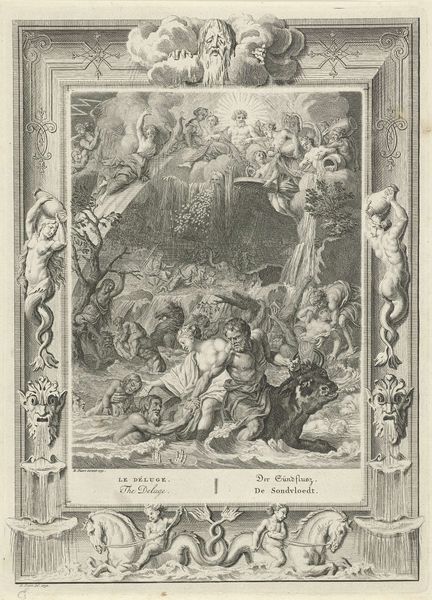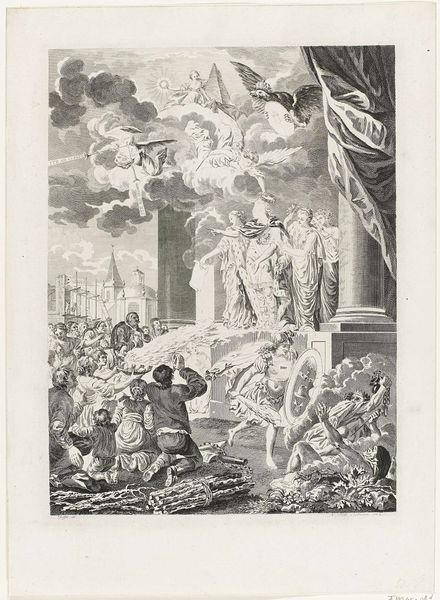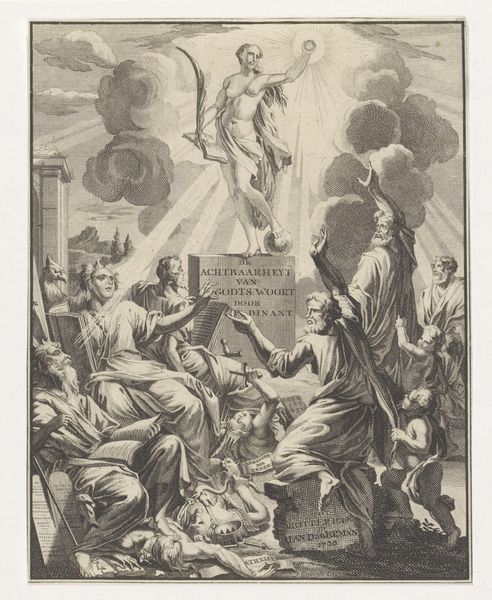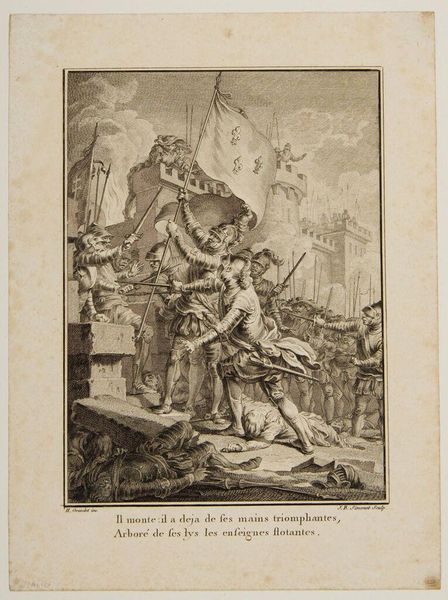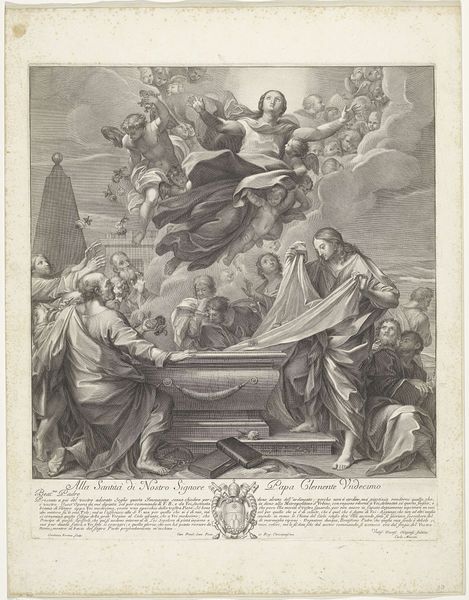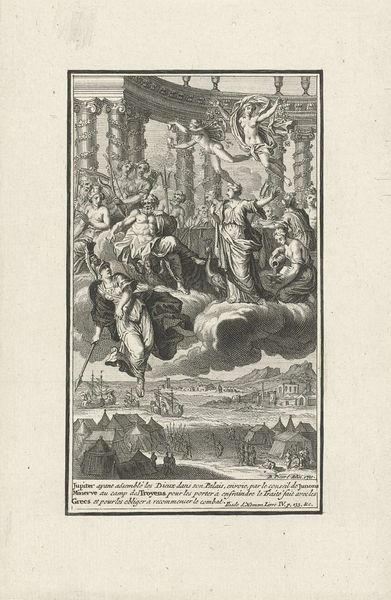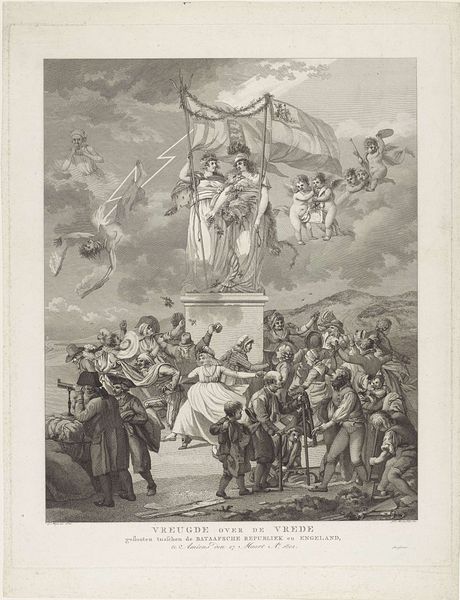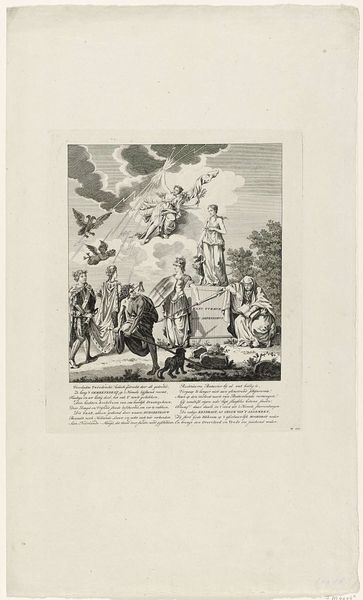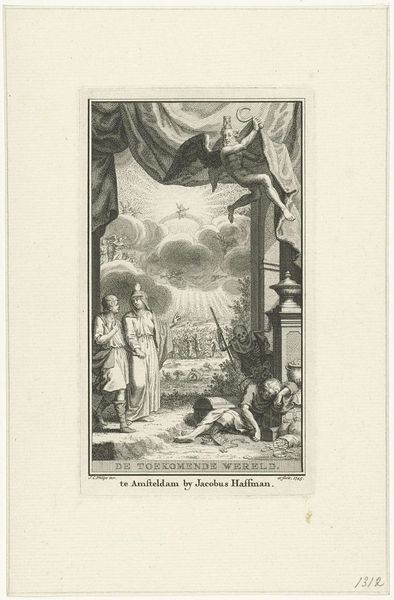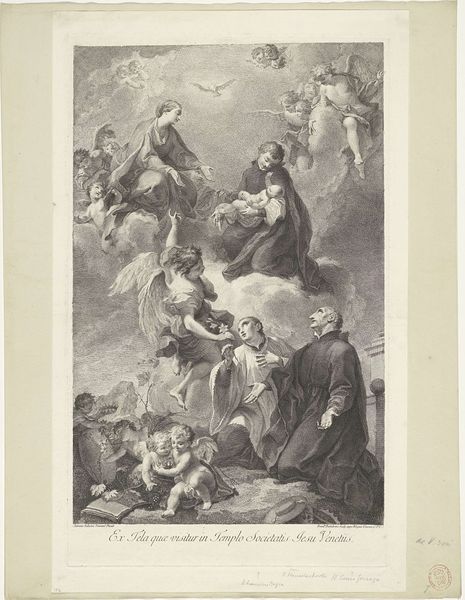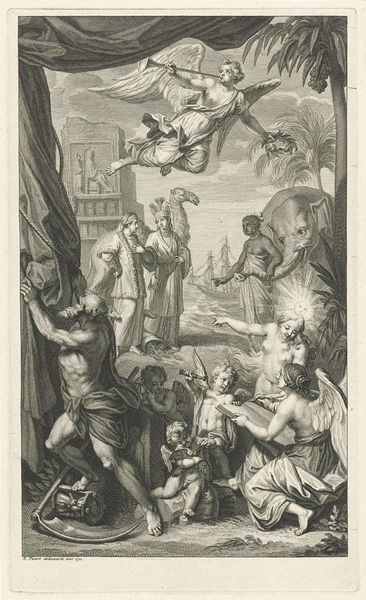
Dimensions: height 460 mm, width 333 mm
Copyright: Rijks Museum: Open Domain
Mathias de Sallieth created this print in 1783, depicting Joseph II's Edict of Tolerance towards Protestants. It offers a window into the complex relationship between religious freedom and political power in 18th-century Europe. The image employs a visual language of hierarchy and symbolism. Emperor Joseph II, flanked by allegorical figures of Justice and Wisdom, gestures towards kneeling Protestants, while angels and divine light fill the upper register. This carefully constructed scene reinforces the Emperor's authority as the source of tolerance. Made in the Austrian Netherlands, now Belgium, the print reflects the influence of Enlightenment ideals on the Habsburg monarchy. Joseph II's reforms challenged traditional Catholic dominance and aimed to modernize the state. But, were these reforms truly enlightened, or simply a means to consolidate power? The print itself becomes a form of propaganda, celebrating the Emperor's actions and shaping public opinion. To fully understand this image, we can consult archives, religious pamphlets, and political treatises of the time. The historian seeks to unravel the layers of meaning embedded within this seemingly straightforward depiction of imperial benevolence.
Comments
No comments
Be the first to comment and join the conversation on the ultimate creative platform.
